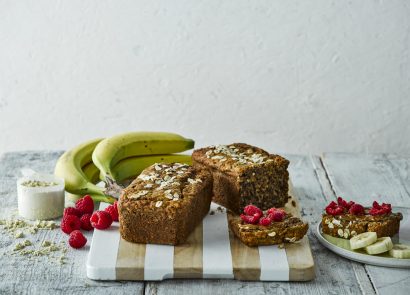Have you started to build your week around logging more miles? Chances are you’re not the only one. Recent data* shows that over 55 percent of striders categorise themselves as a ‘committed runner’. You know, the type that laughs in the face of running miles and miles in the rain, and thinks a muddy race course could be fun. They’re strange. And, admit it, you want to be strange with them. There’s nothing wrong with taking running seriously – you’ll get fitter, healthier and even sculpt a super-lean physique! Whether you want to podium at a parkrun, muster a few more miles or simply beat your buddy around the block, these tips will make you a stronger, faster and fitter runner. There’ll be no stopping you!
-
“DO THE MAGIC THREE” Running coaches see it all the time – enthusiastic runners piling on mileage and making zero improvements. Try increasing the quality, rather than volume, of training. “Improving running performance is all about stepping out of your comfort zone,” says Tracy McCartney, triathlete and Merrell ambassador, “That’s why all good runners include a speed session, tempo run and long run in their training week.” These are the magic three sessions. Here’s how Tracy recommends you do them:
Go Faster: “Add 10 lots of one-minute sprints into your usual weekly run. Aim to run fast for the whole minute. After each effort, jog slowly for two minutes before running fast again. Do this once a week.”
Go Harder: “Unfamiliar with tempo runs? They’re a great way of increasing your speed. Once you have built a good aerobic base – you should be able to run for at least 40 minutes non-stop – start introducing a tempo run into your weekly training. This means running for a set distance at nearly race pace. If you want to speed up over 5k, aim to run 2-3 miles at a ‘comfortably hard’ pace.”
Go Further: “Add 10 percent to your weekly mileage. So, if one week you run a total of 10 miles, run 11 miles the next week. A long run once a week is also essential for teaching your body to run further. Each week, add 10 percent to your long run, too.” -
“BE GOAL ORIENTATED” Goal-setting is a clever trick that increases your commitment to being a better runner. Aiming to run a specific pace will encourage you to stick to your training plan and be more focused when you’re running. “You will find that you approach running in a much more enthusiastic and motivated way if you give your training purpose,” adds Mark Wood, head training tutor at British Military Fitness. Don’t simply aim for your main goal but set smaller goals that will help you to achieve it. For example, your main goal may be to run 10K in under 50 minutes and your immediate goal could be to run 5K in 24 minutes. Breaking the end-goal down into bite-size steps will help you to stay motivated and gain confidence.
-
“CONDITION YOUR BODY” Got a funny running technique? So what? The jury is out as to whether you should tamper with your technique too much. In fact, one study shows that dramatically altering your running form could reduce your running efficiency. However, experts agree that you can improve your natural running technique by developing run-specific strength.
“Exercises like pistol squats, lunges and deadlifts all help train your body for the movements involved in running,” says Hugo Martini Mensch, owner of The Balearic Bootcamp. “By building your strength in vital areas, you’re preparing your body for the stress you put it under when running. Aim to strength train after you run 2-3 times a week.” -
“INVEST IN KIT” Still running in sweatpants? While it’s true that you can run in (nearly) anything, it pays to make training more comfortable by wearing run-specific kit. Good running shoes are a must – don’t buy trainers because you like how they look, and don’t run in shoes made for another sport. Find a pair of trainers that are suited to you. And look for sports clothing made from technical fabric.
“Lightweight and wicking material is better than cotton,” says Simon Callaway, Saucony’s technical representative. “Running apparel is designed specifically with the runner’s motion in mind – ventilation panels are made for heat management and four-way stretch fabrics allow the garment to move with the runner.’ Nifty.



















